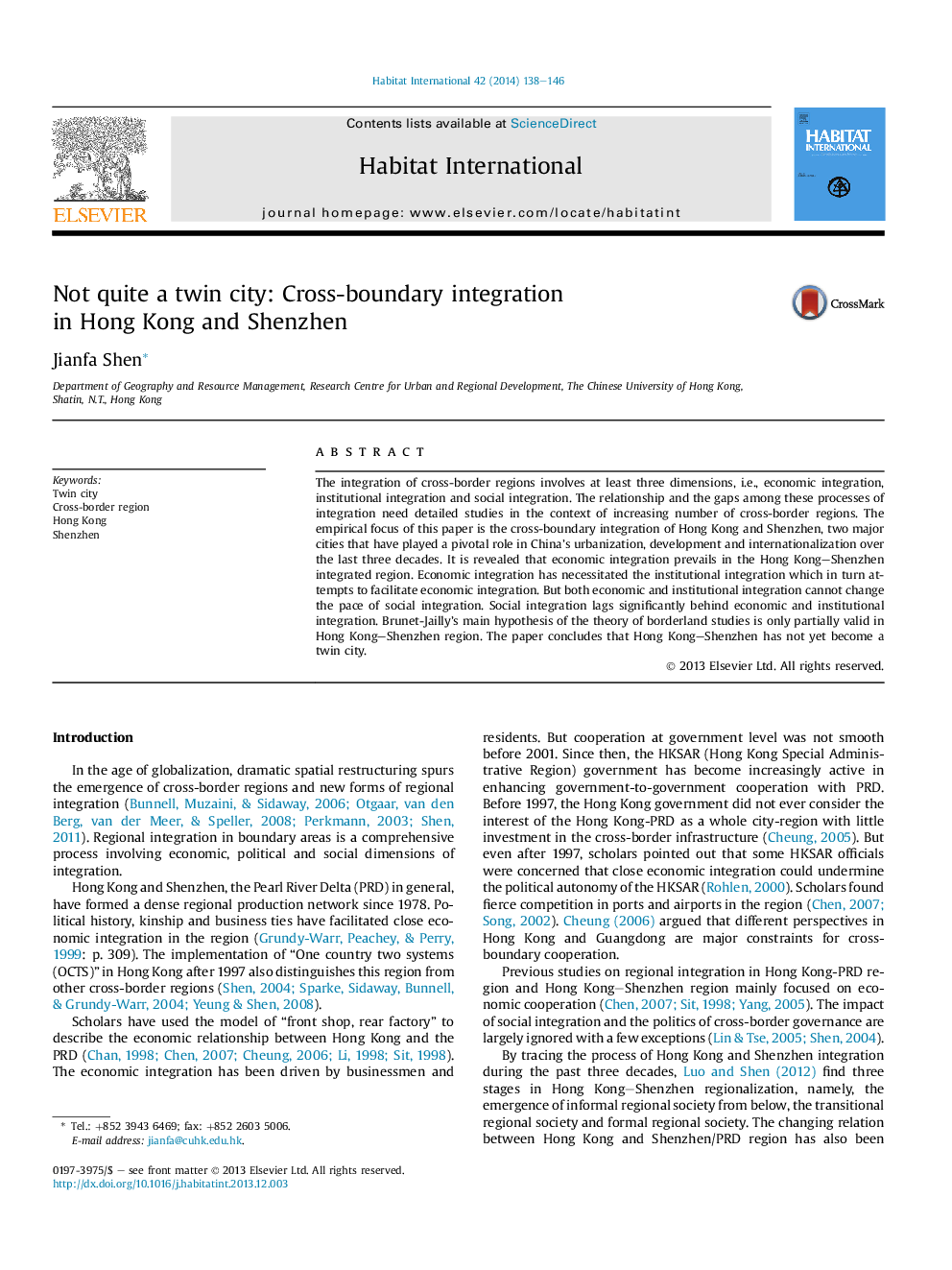| Article ID | Journal | Published Year | Pages | File Type |
|---|---|---|---|---|
| 1047968 | Habitat International | 2014 | 9 Pages |
•Economic integration prevails in Hong Kong–Shenzhen integrated region.•Economic integration has necessitated the institutional integration.•Social integration lags significantly behind economic and institutional integration.•Hong Kong–Shenzhen has not yet, however, become a twin city.
The integration of cross-border regions involves at least three dimensions, i.e., economic integration, institutional integration and social integration. The relationship and the gaps among these processes of integration need detailed studies in the context of increasing number of cross-border regions. The empirical focus of this paper is the cross-boundary integration of Hong Kong and Shenzhen, two major cities that have played a pivotal role in China's urbanization, development and internationalization over the last three decades. It is revealed that economic integration prevails in the Hong Kong–Shenzhen integrated region. Economic integration has necessitated the institutional integration which in turn attempts to facilitate economic integration. But both economic and institutional integration cannot change the pace of social integration. Social integration lags significantly behind economic and institutional integration. Brunet-Jailly's main hypothesis of the theory of borderland studies is only partially valid in Hong Kong–Shenzhen region. The paper concludes that Hong Kong–Shenzhen has not yet become a twin city.
